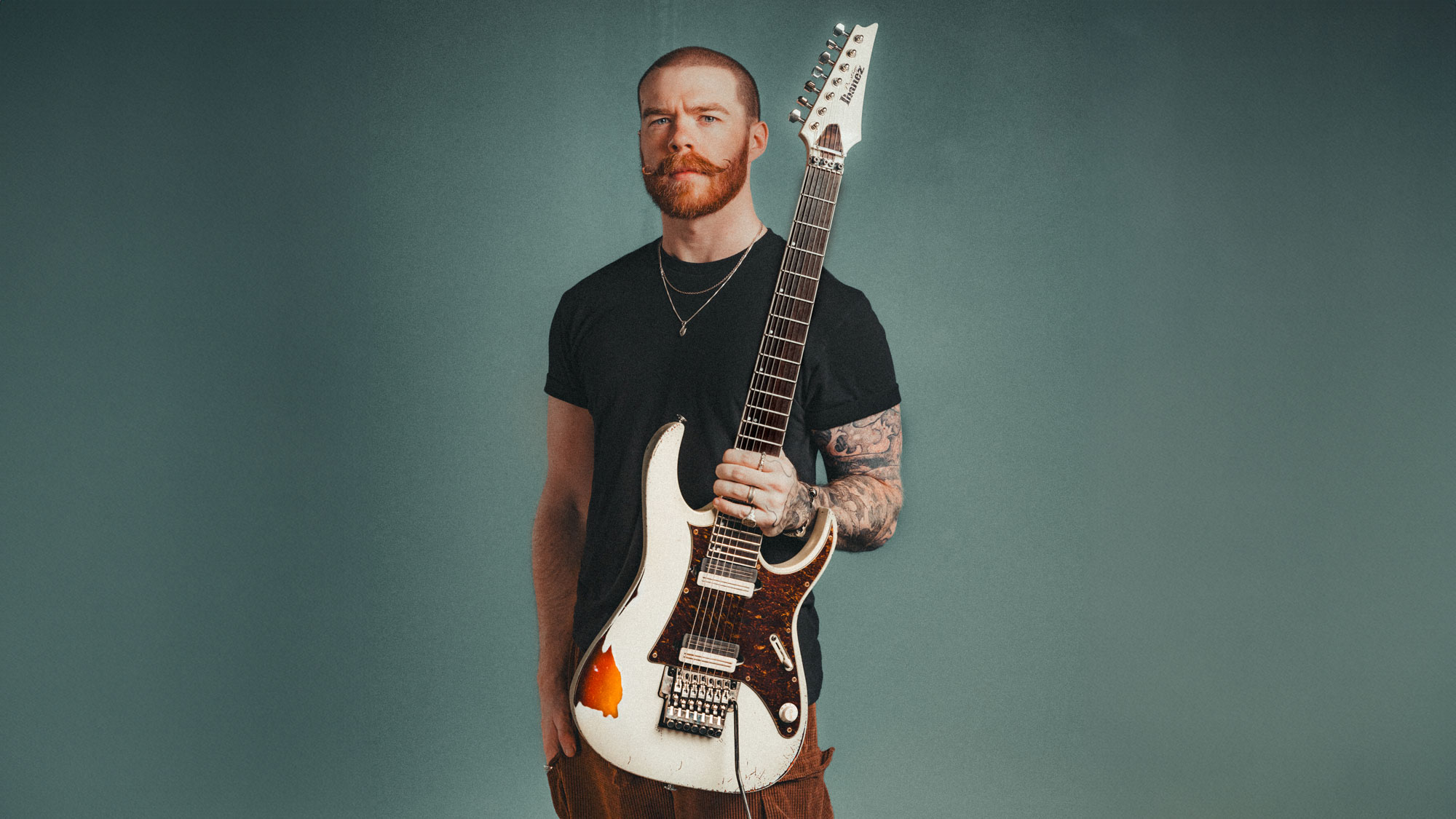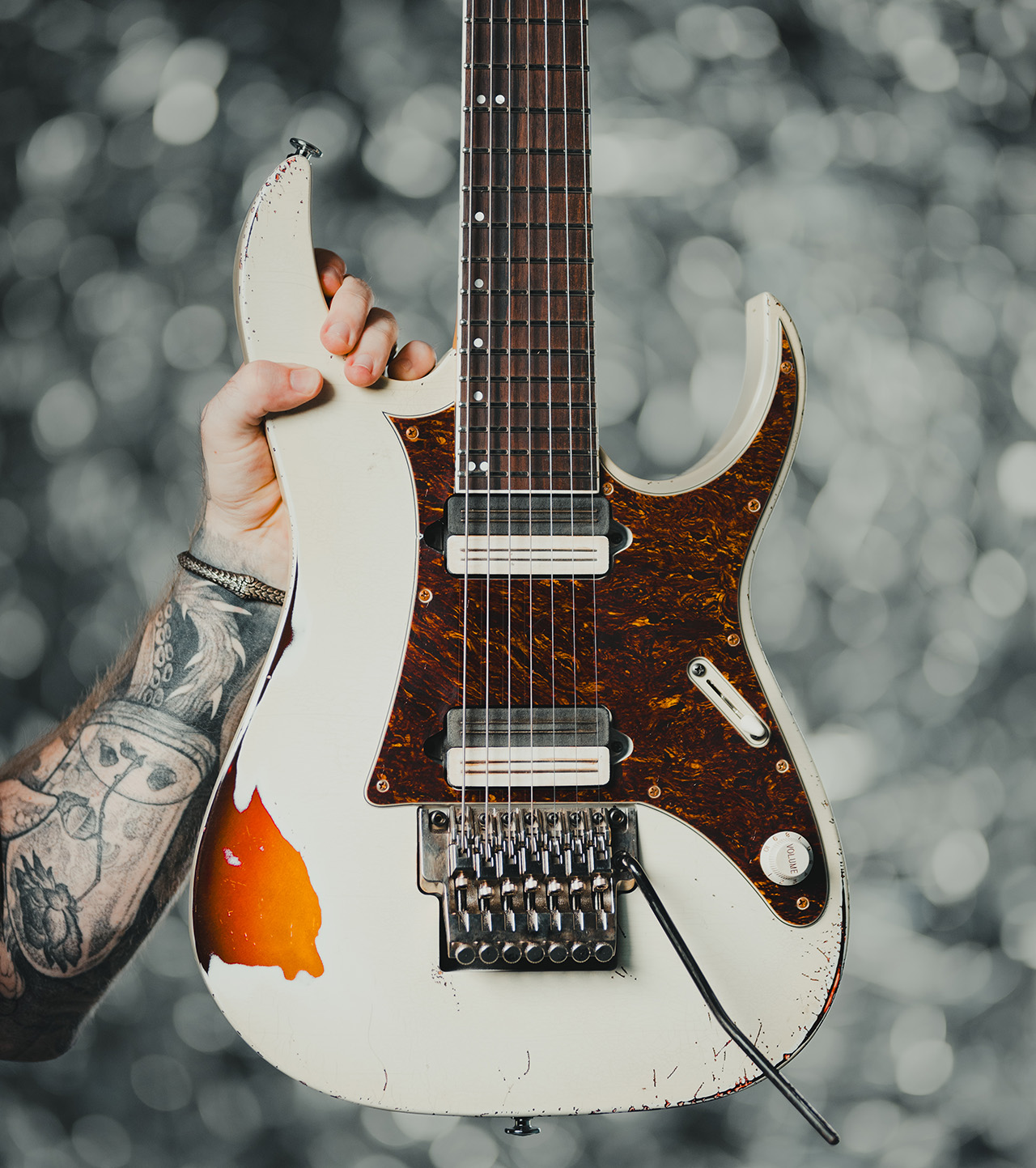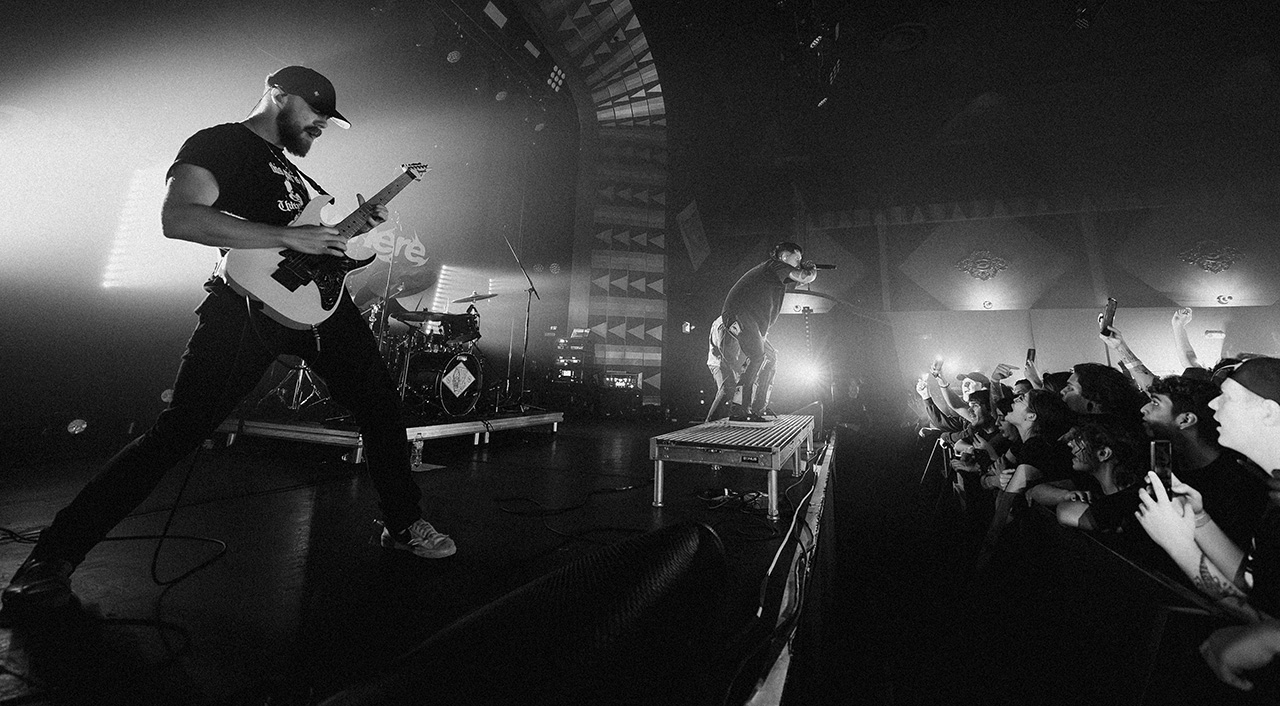
Since becoming a full-time musician last year, Clayton King has kept himself incredibly busy. From touring with Nothing, Nowhere and working with Jacob Unmansky, Austrian Death Machine and Hellena Pandora, to writing enviably viscous and grooving riffs for his socials, his stock is on a meteoric rise.
Now he’s signed as an Ibanez artist – a brand he’s played and loved since he was 12. Inspired by his 2007 reissue RG550, the first Ibanez he owned, the 27” seven-string “monstrosity” has been brought to life with help from Kevin Proctor of Iconic Guitars, the only other brand he loves.
With a vintage-modern aesthetic akin to Mike Stringer’s custom Jacksons and Misha Mansoor’s beastly baritone Surfcaster, it features a Low Edge Pro tremolo, relic’d Bare Knuckle Impulse humbuckers with a three way switch and push/pull controls, plus a tortoiseshell pickguard to protect against King’s relentless picking technique.
“The pickups were a big part,” King says. “I've been rocking Bare Knuckle Black Hawks forever, but they’re offensively pissed off all the time; it’s nice to have something well-rounded. They’re a little less gnarly in the upper-mids, with a little flatter response, but still have that clarity and attack.
“The neck position gives this really kind of throaty, aggressive mid-range when it’s tapped, especially with low tuned stuff, which was a must-have for me.” The guitar was then handed to Proctor for the drool-inducing finishing touches.
“My first Ibanez is an obnoxious Desert Yellow, so with this one I wanted to do something a little more classic,” King says. “We did a relic’d Olympic white over Tobacco Sunburst refinish. I beat my shit up a little bit too much – I wanted that already built in, so when I was banging it around on tour I wouldn't feel bad.”
Armed with an intriguing tuning, King’s ready to further his solo career, with latest single Espada – featuring Spiro and bass extraordinaire Jacob Unmansky – is just the tip of the iceberg.
How do you stay inspired?
“I’ve gotta be completely honest: I don't listen to a bunch of heavy music anymore. I take most of my inspiration from EDM, pop and hip-hop. The progressions flow really nicely and there's always an underlying motif that anchors the song hooks you in and pops up again.
“I’ve started thinking of riff writing completely differently in the past three or four years. My stuff started to do well when I had that change in perspective from just listening to metal to saying, ‘Okay, here’s aspects of another genre I really love. How can I incorporate that in my stuff?’
“When I was only listening to heavy music I started to subconsciously pull ideas from other bands. I try and do that as little as possible now, so I don't immediately just comfort-grab the doomsday riff.”
Your riffs are full of cool artefacts. When do they come into the writing process?
“Even before the riff, I’m thinking, ‘What’s the hook of the track?’ That hook can be melodic or rhythmic, and then I’ll build up from there. I’ll normally start with a really simple idea on a lo-fi piano. If it sounds good there, I know I have an earworm and a keeper.
“Once the foundation is really good, I'll sprinkle those techniques around that. I never want to write something where the showcase is a cool technique or some flair. Those ideas come from not wanting to let the riff get stale – it’s a way of changing things up and adding a little extra spice.”

Your custom Ibanez is in a drop F# open tuning.
“Yeah, it’s F#-C#-F#-B-C#-F#-B – I love having as many open strings in the key of a song as I can. One, because I'm lazy and don't know music theory! But two, it makes things fun. You can have a motif that really anchors the song, and you can have a lot more variety to jump from the low string to the middle, even to the high, and split the hook between all of them.
“The inspiration came from Monuments. I’m a huge fan of John Browne and Olly Steele. They play in DADGAD, which I still think is the best tuning, especially for metal.”
Having something visual as I'm writing is such a game changer for me
“For some reason string skipping has always been really easy for me, whereas straight alternate picking and legato techniques have not been. I found that early on.
“I do prefer up the neck on the low string; I think there’ a really cool tonality past the 12th fret. But generally speaking, I do like to go to the thinner string when possible. I feel like it cuts through the mix a little bit more. You get that timbre that's a little more upper-mid range.”

What are your tricks for breaking out of creative ruts?
“I’ve got two things. The first one is really weird: I've got a second monitor in my studio. I’ll throw up Planet Earth or some nature documentary; something that matches my mood. Having something visual as I'm writing is such a game-changer for me. It helps shift my perspective and prolong my flow state.
“The other thing is that I really like self-imposed limitations. I’ll say, ‘You can only write in 3/4; you can only write on these two or three strings; or use these couple notes; or whatever.’ I feel like you get paralysis by analysis sometimes by having so many options. I find it easier to dial it in. So I’ll do one of those two things and I’m out of the rut in 10 or 15 minutes every time.”







